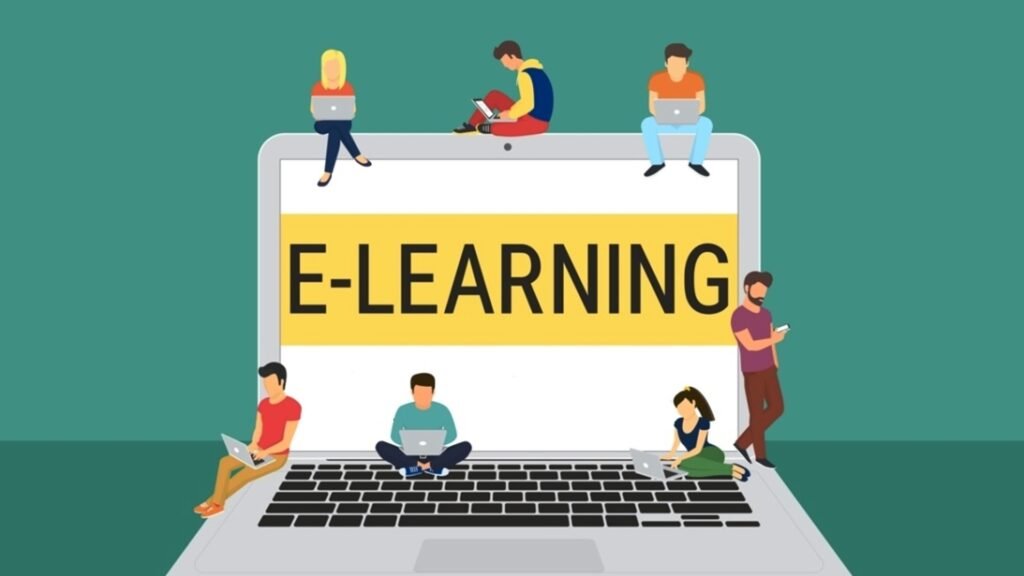Distance Learning and Online Education The way people access and gain knowledge has been changed in recent years by online education and remote learning. They were once thought of as alternative teaching approaches, but today they are crucial parts of all mainstream educational systems across the globe. The internet’s quick development has made it possible for online education platforms to proliferate, increasing accessibility to education for people from all backgrounds and schedules, including geographic location. This essay explores the complexities of online education and distant learning, including its history, main advantages, difficulties, current and projected trends, and prospects.

Historical Evolution of Distance Learning
The origins of distance learning may be traced back to the 19th century, when correspondence courses made it possible for students to receive materials. The 20th century saw the introduction of radio and television, which allowed instructional broadcasts to reach a wider audience. In the 1850s, the University of London was among the first to start offering degrees through distance learning, which allowed students to complete their coursework without physically attending courses.
Defining Distance Learning and Online Education
Online education and remote learning, while commonly used interchangeably, have slightly different scopes and modalities of delivery.
Distance learning programs are those in which the teacher and the pupil are not in the same location or time zone. It includes a variety of teaching techniques, including correspondence courses and online learning, and it can make use of print, radio, television, and the internet, among other media.
Flexibility and Accessibility
The flexibility that comes with online and distant learning courses is one of its main advantages. Students can learn from almost anywhere in the globe, at their own speed, and on their own schedule—unlike in traditional classroom environments. Those who are working, have a family to support, or live in a distant place without access to good schools may particularly benefit from this.

Customization and Personalization
Online education platforms frequently use adaptive learning technologies to tailor curricula to each student’s needs. As a result, the system may provide students with individualized learning experiences by modifying the speed, level of difficulty, and kind of material according to their performance and preferences. This method can improve student engagement and success while accommodating various learning styles.
Cost-Effectiveness
There are several expenses related to traditional schooling, such as lodging, transportation, and infrastructure. Studying from home allows students to save money, and by providing online courses instead of massive physical campuses, universities may lower operating costs.

Diverse Learning Opportunities
Access to a wide range of courses, programs, and specializations is possible through distance learning. Furthermore, by enrolling in quick courses or certification programs, professionals can upskill or reskill without having to take a break from their work thanks to online education’s facilitation of lifelong learning.
Global Networking
Online learning frequently creates a global community of learners by connecting students from all over the world. Students can exchange viewpoints, ideas, and experiences through group projects, discussion boards, and social learning exercises, which will enhance their educational experience.

Conclusion
Online and distance learning have become revolutionary forces in the global education system. From simple correspondence courses, they have developed into advanced platforms that provide accessibility, flexibility, and a multitude of learning options. The flexibility to learn at any time and from any location has democratized education, enabling students from a wide range of backgrounds to acquire knowledge and abilities that were previously only available to those who could attend traditional classrooms.
FAQs
What is the difference between distance learning and online education?
This can take many different forms, including correspondence, radio, or online courses.
A subcategory of remote learning known as online education takes place exclusively online and makes use of digital tools including video conferencing, learning management systems, and online assignments.
What are the main benefits of online education?
the freedom to study on your own terms and at your own speed.
being reachable from any location with an internet connection.
Cost-effectiveness because it eliminates the need for lodging and travel.
access to many different courses, including ones that aren’t offered nearby.
Customized education with the aid of adaptable technology.
Are online degrees and certifications credible?
Yes, a lot of reputable online degrees and certificates from recognized universities are accepted. It is imperative to confirm the certification of the organization providing the course to guarantee its authenticity and employer approval.
What are some challenges faced in distance learning?
technological problems such as unreliability in gadgets or internet connection.
less possibilities for networking and social contact.
the necessity of having good time management and self-discipline.
maintaining intellectual honesty when taking tests.
What technologies are essential for online education?
Learning Management Systems (LMS), including Blackboard and Moodle.
Tools for video conferences such as Zoom and Google Meet.
tools for collaboration like Trello and Google Docs.
Apps for mobile learning such as Khan Academy and Coursera.
new technologies for immersive learning, such as virtual reality (VR).



